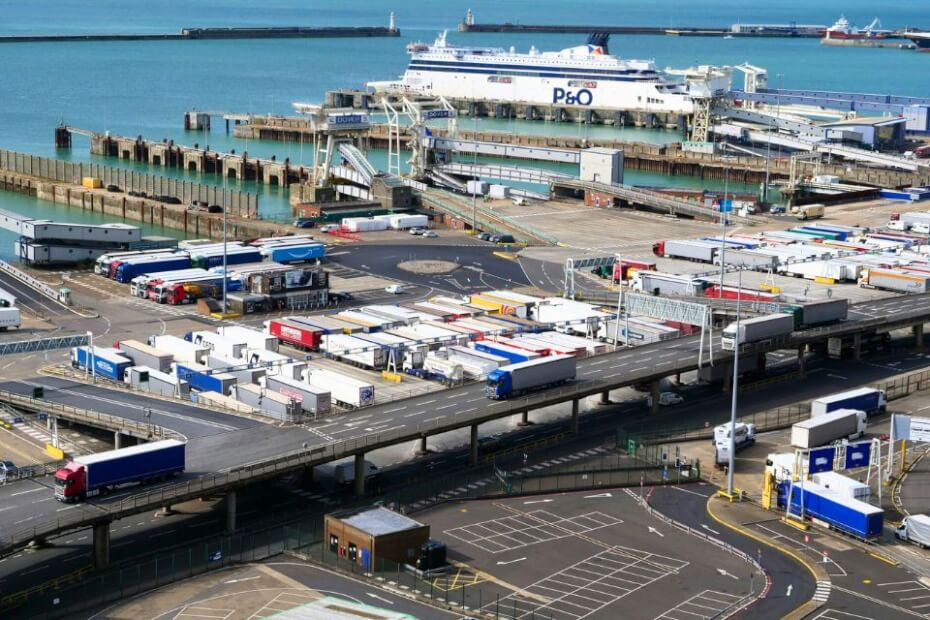
A British Minister of Parliament (MP) said the European Union’s (EU’s) new Entry/Exit System (EES) border check system will have a soft launch period.
Minister for Roads and Local Transport Guy Opperman said the soft launch would address “so much of the queuing, so many of the complications,” as The Independent reported.
The EU will implement its new automated EES border check system in October 2024.
Instead of passport stamping, the EES uses travelers’ biometric data to record their entry and exit from the Schengen Zone.
It will affect all non-EU travelers, both short-stay visa holders and visa-exempt individuals such as British citizens.
Authorities have warned that the EES may cause long queues, delays, and traffic jams. This is due to travelers registering fingerprints and facial scans at the border.
“We certainly have a six-month period where the implementation of this is effectively by way of a soft launch,” Opperman told the European Scrutiny Committee.
He said that if there would be long queues or delays, “precautionary flexibility measures” allow for easier passage of vehicles, coaches, HGVs, and cars.
Travel and transport officials anticipate longer queues and delays due to the EES at UK-EU borders with juxtaposed controls.
Juxtaposed controls mean EU border officers perform immigration checks while the travelers are still in the UK.
Passengers must disembark their vehicles to register for the EES when crossing at the Port of Dover and the Channel Tunnel.
The EES could also cause long snaking lines at London’s St. Pancras Station, where space for new kiosks is limited.
EES mobile app will be available soon after the launch
As Eurostar CEO Gwendoline Cazenave had declared, the EES mobile app will not be ready in time for the system’s launch.
Tom Pursglove, Minister of State at the Home Office, confirmed it, too, during the meeting with the European Scrutiny Committee.
EU policy requires travelers visiting the Schengen Zone for the first time to register facial and fingerprint data before a border officer.
The EES app in development aims to help travelers do this ahead of time and away from the border.
Both the EU and its member states recognize that the EES app will “really help” mitigate challenges.
Pursglove said the UK government “feels very strongly” that the app should be “put in place at the first possible juncture.”
“There are huge advantages around trying to be able to do as much of this processing upstream as possible,” he told the committee.
The Home Office Minister added that the EES app will “follow on accordingly.”
Still, Pursglove said the government will “continue to push” for its availability upon the launch of the EES border check system.
“There is a determination to try and deliver that app-based solution as quickly as possible,” he stressed.
Still, an EU spokesperson said using the EES app would be voluntary for EU member states.
EES border check system preparations
Preparations are being made at UK-EU borders for the EES system rollout later this year despite the app’s unavailability.
Getlink, the company that manages the Channel Tunnel, has completed a new covered drive-through EES pre-registration at its French terminal in Coquelles.
It will allow non-EU drivers using the LeShuttle service to travel to the UK to submit passport and biometric data.
Getlink expects the kiosks needed for biometric checks will be completed by May 2024.
The EES infrastructure at Folkestone on the UK side of the tunnel is ongoing. Getlink said kiosks will be installed starting July 2024.
The head of the Port of Dover, Doug Bannister, said they’re mitigating EES delays by allowing travelers to register for the EES during the usual waiting time before boarding the ferry.
The Telegraph reported that there will be a registration zone within the holding area where cars line up 90 minutes to an hour before their ferry departs.
During this waiting time, travelers can fill out a form and have their facial and fingerprints captured.
Natalie Elphicke, MP for Dover, said, “There’s so much still to be done between now and October.”
She has urged the UK government to prioritize the smoother introduction of the EES.
“It’s really important that the government keeps its foot on the pedal in the next few months,” Elphicke said.
She stated that while preparations are underway, the EU has not fully disclosed the EES regulatory requirements.
UK’s Department for Transport is working with the EU, member states, port authorities, and ferry operators to minimize delays.
Push to delay EES launch to 2025
Initially set in 2021, the EES rollout was postponed to May 2022 and September 2023 due to technological concerns.
It was pushed back to October 2024 to minimize travel disruption during the Olympics in France from July to September 2024.
The French airports union said it has been negotiating with the EU to postpone the EES again until the first quarter of 2025.
Due to the anticipated traffic volume during the Olympics, Parisian airports could not adequately prepare for the EES border check system.
However, the French Union of Airports said the EU is “fixed in its position” to launch the EES later in the year.

